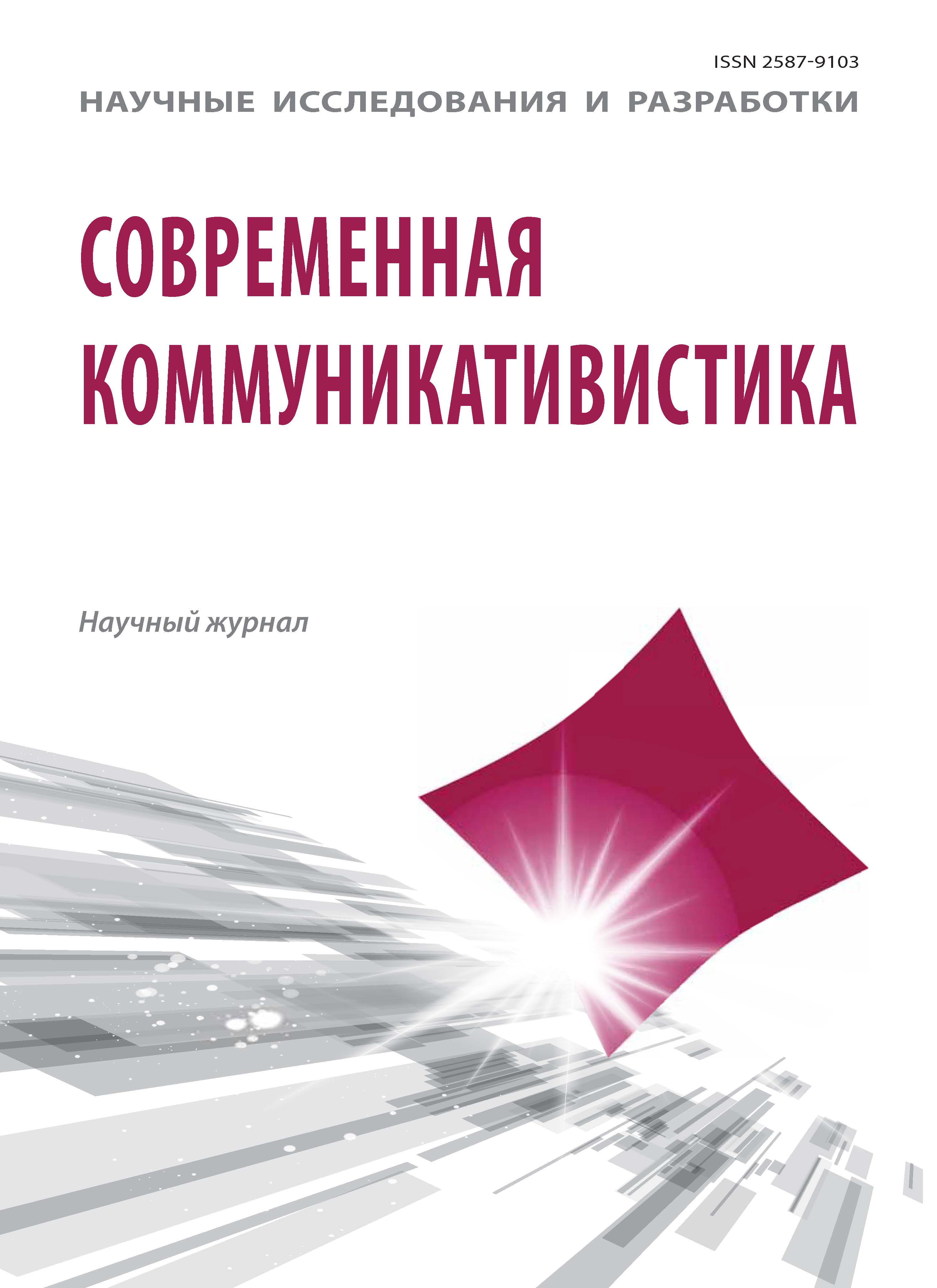from 01.01.2006 until now
Ufa, Ufa, Russian Federation
The studying of the specific character of the word meaningreligious component is currently important area of modern social linguistics, psycholinguistics, interpersonal communication. We have made an attempt to describe verbalized part of an individual religious consciousness based on the material of own experimental observation, questionnaire with the application of semantic differential method. The questionnaire results according to the semantic differential method and empirical data are person-centered as the specificity of socio-psycholinguistic approach consists in a researcher’s examining language activity through an intermediary – recipient and assigning the task to see, hear and experience the word and its meaning from the point of another perceiving person’s view. The studying of religious word meaning identification with the application of socio-psycholinguistic methods, including the analyzing of verbalized part of religious consciousness, gives the opportunity to feature social, psychological and its other components and represents an extensive field for a researcher to study the specific character of the religious behavior of Muslims and Orthodox Christians living in Republic of Bashkiria.
religious self-identity, religiosity, religious consciousness, mediareality, religious intolerance.
Целью исследования является описание религиозного компонента языковой картины мира православных и мусульман в Республике Башкирия (далее — РБ). Промежуточные результаты предпринятого научного изыскания были представлены в [6; 10; 12; 13] в виде докладов и сообщений и активно обсуждались на научных мероприятиях. Взаимодействие народов в различных социокультурных ситуациях — сложное исследовательское поле в аспекте противоречивости человеческих вербальных взаимоотношений, перспективности с позиций их устойчивости и изменчивости [11]. Язык и религия являются способами формирования и существования различных картин мира [6, с. 97–98]. Как известно, «картина мира в общефилософском смысле — это совокупность мировоззренческих знаний о мире, совокупность предметного содержания, которым обладает человека, наконец, — целостный образ мира, имеющий исторически обусловленный характер» [3, с. 5]. Следовательно, в индивидуальной картине мира будет присутствовать что-то уникальное для отдельной личности. В качестве одного из инструментариев, потенциал которого, по нашему убеждению, еще не до конца исчерпан, нами был избран метод семантического дифференциала (СД), разработанный американским психологом Чарльзом Осгудом. Метод СД представляет собой способ определения личностного смысла, позволяющий измерить эмоциональную составляющую, которая, в свою очередь, служит важным детерминантом отношения респондентов к тому или иному символу или ситуации. При помощи особых биполярных шкал (испытуемые в эксперименте располагали ответы в диапазоне от «–3» до «+3», выбирая близкий им ответ) данный метод позволяет провести количественный и качественный анализ как индивидуального смысла, так и группового сознания. Другими словами, метод СД позволяет выявлять коннотативные значения, вкладываемые испытуемыми в объект исследования. В проведенном нами эксперименте с обозначенной выше целью исследования применение метода СД обусловлено возможностью реализации «социо- и психолингвистического подхода» к изучению религиозной, верующей и атеистической личностей и их аффективных реакций на обозначенную ситуацию [13, с. 24]. Участниками эксперимента стали студенты Российского исламского университета ЦДУМ России, учащихся мечети-медресе «Ляля-Тюльпан» и Богословских епархиальных курсов (г. Уфа), а также студенты светских образовательных учреждений высшего образования, в частности, обучающиеся в ФГБОУ ВО «Уфимский государственный авиационный технический университет» (УГАТУ). Полученные данные от перечисленных групп предполагалось рассмотреть в сравнительно-сопоставительном контексте, чтобы обеспечить валидность и объективность результатов.
1. Belyanin V.P. Psikholingvisticheskie aspekty khudozhestvennogo teksta [Psycholinguistic Aspects of the Artistic Text]. Moscow, MGU Publ., 1988. 120 p.
2. Bog Eynshteyna [Einstein’s God]. Available at: http://specialtheoryandpractice.ru/Einstein (accessed 17 December 2017).
3. Goykhman O.Ya. Mezhkul’turnaya kartina mira i ee interpretatsiya [Intercultural picture of the world and its interpretation]. Nauchnye issledovaniya i razrabotki: Sovremennaya kommunikativistika [Scientific Research and Development: Modern Communicativistics]. Moscow, I. 3, 2016, pp. 5-7.
4. Goroshko E.I. Yazykovoe soznanie: gendernaya paradigma [Language consciousness: a gender paradigm]. Moscow, 2003. 389 p.
5. Lotman Yu.M. Kanonicheskoe iskusstvo kak informatsionnyy paradoks [Canonical art as an information paradox]. Problema Kanona v drevnem i srednevekovom iskusstve Azii [The Canon Problem in the Ancient and Medieval Art of Asia]. Moscow, 1973, pp. 16-22.
6. Mursalimova Yu.R. Assotsiativnoe pole slova BOG v russkom yazykovom soznanii [Associative field of the word GOD in the Russian language consciousness]. Teoreticheskie i prikladnye nauki i obrazovaniya v XXI veke [Theoretical and Applied Sciences and Education in the 21st Century]. Tambov, 2012, pp. 97-103.
7. Natsional’nyy sostav naseleniya Respubliki Bashkortostan po dannym Vserossiyskoy perepisinaseleniya 2010 goda: statisticheskiy byulleten’ [The national composition of the population of the Republic of Bashkortostan according to the All-Russian population census of 2010: statistical bulletin]. Ufa, 2012. 30 p.
8. Religiya v informatsionnom pole rossiyskikh SMI [Religion in the information field of Russian media]. Available at: http://religare.ru/2_26822.html (accessed 10 February 2018).
9. Rogozina I.V. Media-kartina mira: kognitivno-semioticheskiy aspect [Media-picture of the world: cognitive-semiotic aspect]. Moskva-Barnaul, 2003. 289 p.
10. Salikhova E.A. Otobrazhenie religioznoy sostavlyayushchey kartiny mira v yazykovom soznanii pravoslavnykh i musul’man Bashkortostana [Displaying the religious component of the picture of the world in the linguistic consciousness of Orthodox and Muslims of Bashkortostan]. Vestnik Cherepovetskogo gosudarstvennogo universiteta [Bulletin of Cherepovets State University]. 2015, I. 5, pp. 65-72.
11. Salikhova E.A. Modelirovanie protsessov ovladeniya i pol’zovaniya psikhologicheskoy strukturoy znacheniya slova pri bilingvizme [Modeling the processes of mastering and using the psychological structure of the meaning of a word under bilingualism]. Moscow, Flinta Publ., 2016. 478 p.
12. Salikhova E.A., Mursalimova Yu.R. Religioznoe znanie s tochki zreniya kategoriy «znachenie» i «znanie» / «poznanie» [Religious knowledge in terms of categories “meaning” and “knowledge” / “knowledge”]. Vestnik VEGU [Vestnik VEhU]. Ufa, 2013, I. 2, pp. 125-130.
13. Salikhova E.A., Mursalimova Yu.R. Religioznyy komponent znacheniya slova v mekhanizme identifikatsionnykh protsessov individa [The religious component of the meaning of a word in the mechanism of the individual’s identification processes]. Nauchnye issledovaniya i razrabotki: sovremennaya kommunikativistika [Scientific Research and Development: Modern Communicativistics]. Moscow, I. 3, 2016, pp. 24-28.
14. Tkachenko A.V. Itsizm kak osnovnaya forma religioznykh predstavleniy sovremennoy molodezhi [Ittsism as the basic form of religious representations of modern youth]. Sistemnaya sotsiologiya i psikhologiya [System sociology and psychology]. I. 6, Moscow, 2012, pp. 112-120.
15. Chto takoe «dzhikhad»? [What is jihad?]. Available at: http://islam-today.ru/veroucenie/cto-takoe-dzihad (accessed 28 December 2017).







